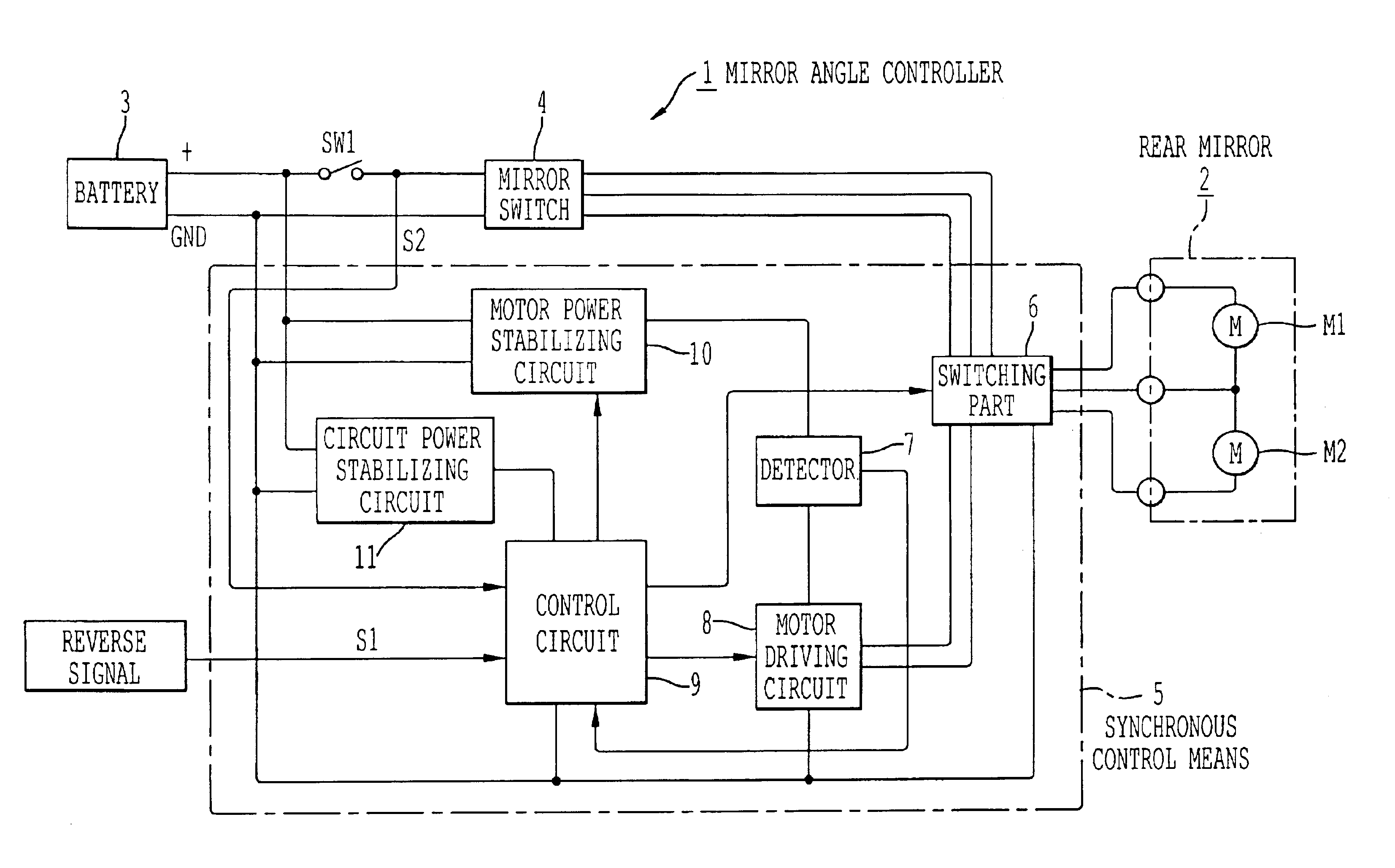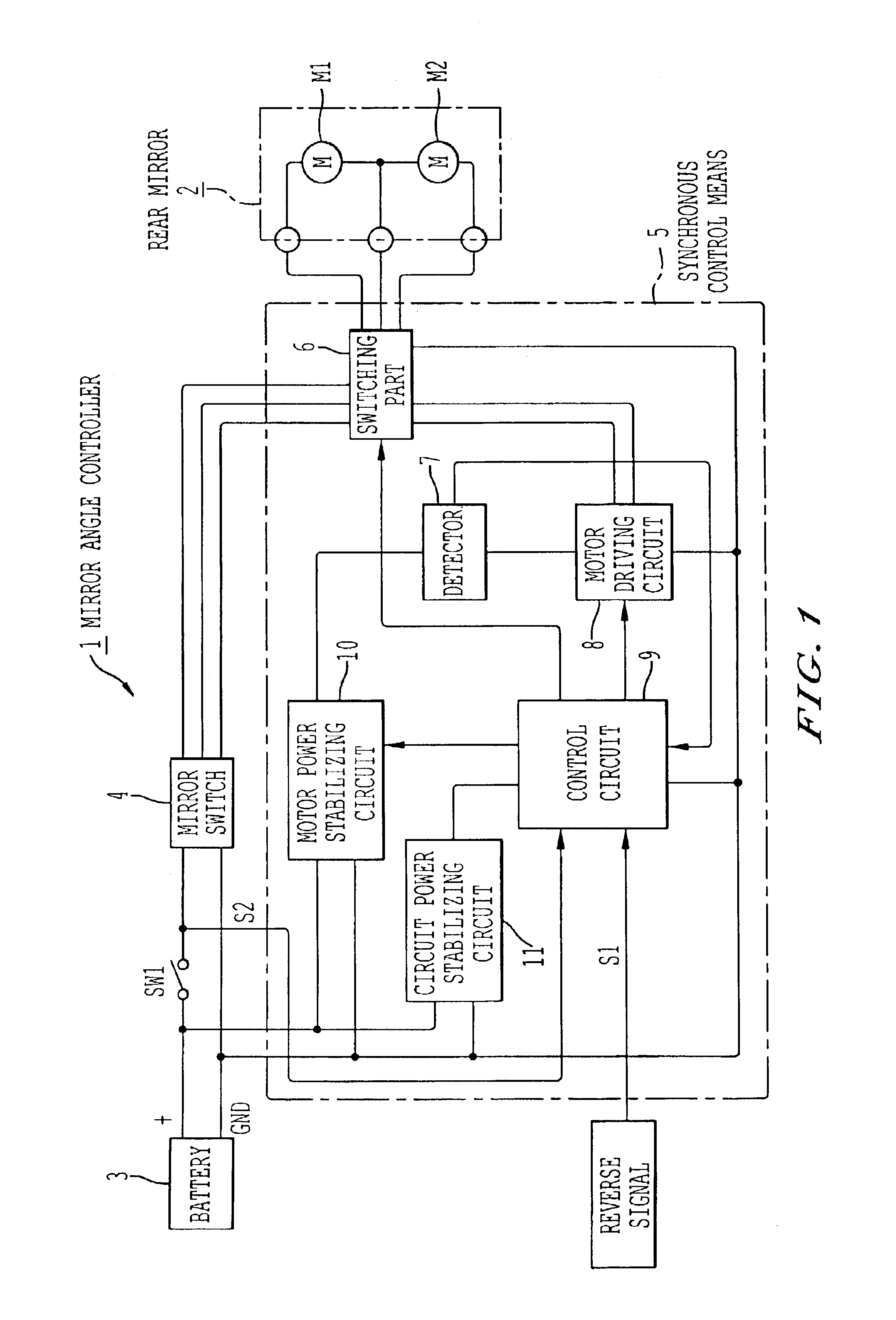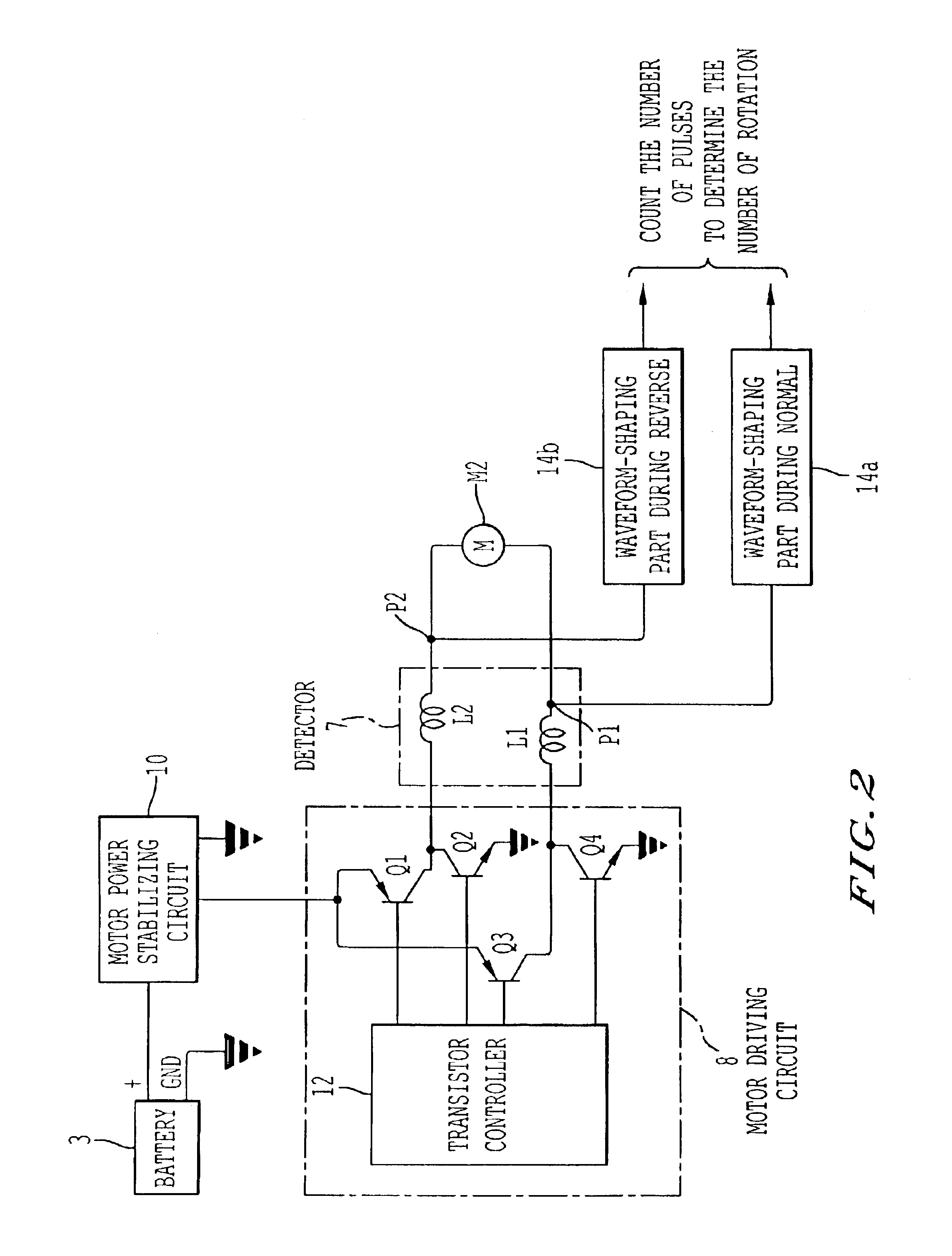Vehicular mirror angle controller
a controller and mirror technology, applied in the direction of motor/generator/converter stopper, dynamo-electric converter control, instruments, etc., can solve the problems of affecting reducing the detection efficiency of the controller, so as to improve the detection performance and simplify the circuit arrangement
- Summary
- Abstract
- Description
- Claims
- Application Information
AI Technical Summary
Benefits of technology
Problems solved by technology
Method used
Image
Examples
Embodiment Construction
A preferred embodiment of the present invention will now be described with reference to the drawings. FIG. 1 is a block diagram showing an arrangement of a mirror angle controller 1 according to one exemplified embodiment of the present invention, and a rearview mirror 2, and FIG. 4 is a circuit diagram showing the arrangement more specifically. As shown in FIGS. 2 and 4, the mirror angle controller 1 reversibly controls rotation of a lateral motion motor M1 and a vertical motion motor M2 mounted in the rearview mirror 2 through manual operation, and adjusts a tilt angle of the rearview mirror 2 to a desired angle.
Further, the mirror angle controller 1 normally rotates the vertical motion motor M2 to allow the mirror to automatically tilt to a desired set position when a reverse signal (external signal) outputted upon operation of the shift lever of the vehicle to slip the gear into reverse (Reverse gear) is given, so that the driver can be provided with a view of the area near a re...
PUM
 Login to View More
Login to View More Abstract
Description
Claims
Application Information
 Login to View More
Login to View More - R&D
- Intellectual Property
- Life Sciences
- Materials
- Tech Scout
- Unparalleled Data Quality
- Higher Quality Content
- 60% Fewer Hallucinations
Browse by: Latest US Patents, China's latest patents, Technical Efficacy Thesaurus, Application Domain, Technology Topic, Popular Technical Reports.
© 2025 PatSnap. All rights reserved.Legal|Privacy policy|Modern Slavery Act Transparency Statement|Sitemap|About US| Contact US: help@patsnap.com



